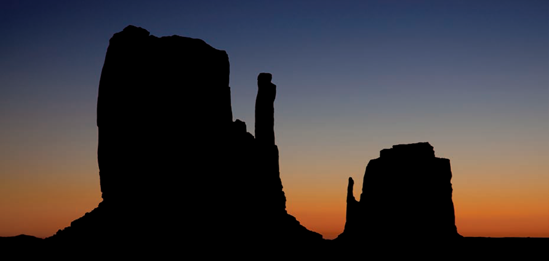Chapter I. To HDR or Not to HDR ... That is the Question

I'm assuming you picked up a copy of this book because you want to learn about High Dynamic Range photography. Cool. You will learn a lot about HDR here. Most important, you'll learn how to use HDR imaging to create your own unique pictures—perhaps even works of art.
You'll also learn something else: There is a time and place for HDR. In other words, there are situations for which HDR is a dream. In other cases, you definitely don't want to use HDR, because it would spoil the mood or make the scene look bad.
Opening this chapter is one of my favorite non-HDR images. It's a sunrise photograph of the Two Mittens in Monument Valley, Utah. I could have used HDR, but opening up the shadows for a higher dynamic range image would have lessened the effect of the dramatic silhouette.
On the next page you'll see that using HDR on a similar scene was not the best idea. You will also see two examples of dramatic non-HDR pictures.
HDR is a very cool technique, but it's important to use it wisely. Knowing when to use it and when to leave an image alone will make you a better photographer. Just remember that a photograph is all about the light. Light illuminates a scene and light can be created in the digital darkroom. Light makes all the difference in the world.
No Substitute for Good Light
Here are three pictures that illustrate HDR vs. non-HDR ...
Get Rick Sammon's HDR Photography Secrets for digital photographers now with the O’Reilly learning platform.
O’Reilly members experience books, live events, courses curated by job role, and more from O’Reilly and nearly 200 top publishers.

